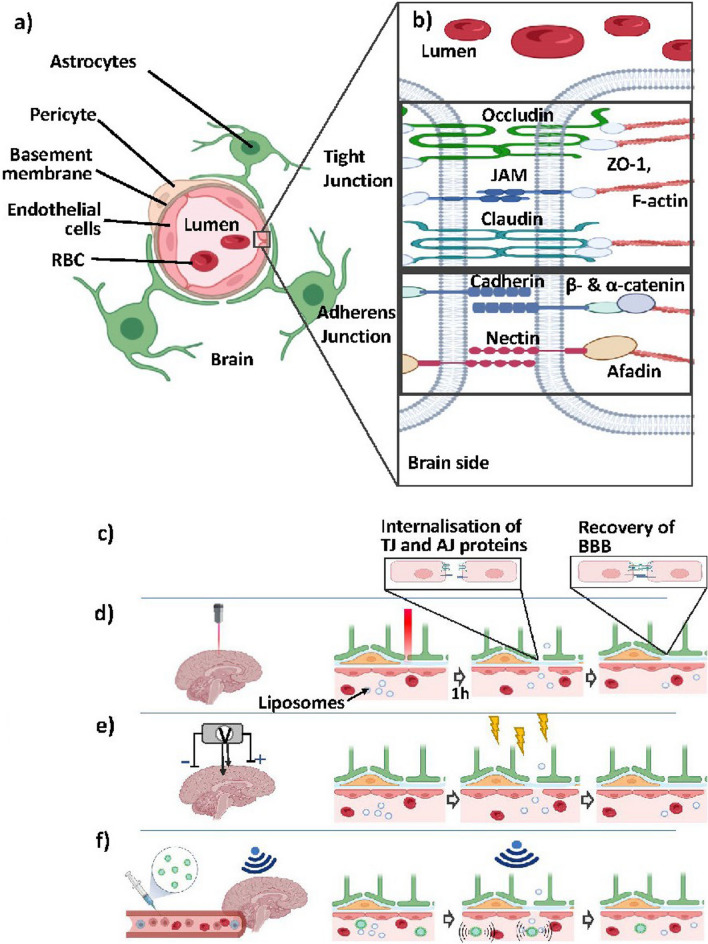Fig. 1.
Schematic of a BBB. a Cell components. A basement membrane surrounds the endothelial cells that form the lumen. Surrounding these are pericytes and astrocytes, which together cover roughly 30 and 99% of the blood vessel, respectively. b Tight and adherens junctions. Apical and lumen TJs are composed of three transmembrane-spanning proteins: Occludin, Claudin, and JAM, which recruit ZO-1 (ZO-2, ZO-3), an actin-binding protein. Adjoining are AJs, which are composed of nectin- and cadherin-based adhesions. In the extracellular domain, nectins of neighbouring cells dimerise while the cytoplasmic tail recruits Afadin. The cadherin cytoplasmic tail recruits β-catenin, which binds to α-catinen that connects to the F-actin. c Schematics of BBB opening process during stimulation. TJ and AJ proteins internalise and retract to open the BBB for liposomes to trespass before recovery. d In photodynamic therapy, in which the brain is exposed to light for a certain time, post-exposure BBB opening, and subsequent recovery is observed. e Process in electroporation and non-invasive transcranial electrodes. During exposure to an electric field, TJ & AJ proteins functions reduce, allowing particles to pass paracellularly. Removal of stimulation leads to an almost instant BBB closure. f schematic of FUS with microbubbles injected intravenously prior to stimulation. During FUS stimulation, microbubbles within the capillaries are excited via external US, with vibrations opening the BBB, where removal of US leads to immediate closure of the BBB

